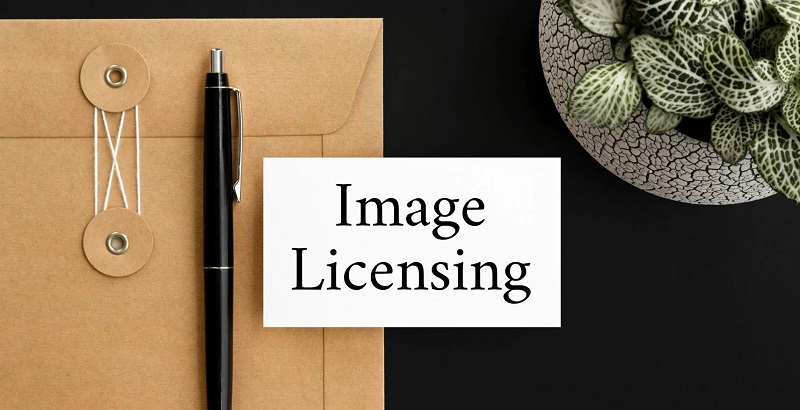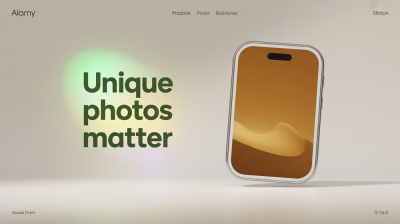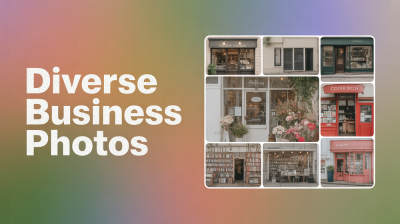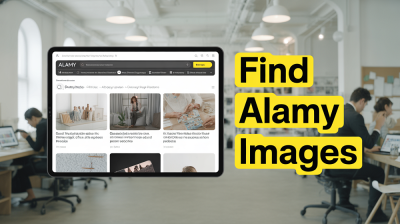1. Introduction
2. Understanding Getty Images Licensing

Getty Images offers a range of licensing options that allow individuals, businesses, and organizations to
legally use their vast collection of images. Understanding these licensing options is crucial to ensure compliance with copyright laws and to avoid any legal issues related to image usage. Here are the key points to
explain Getty Images Licensing:Royalty-Free (RF) License
The most common licensing option, Royalty-Free allows users to pay a one-time fee to use an image multiple times without additional royalties for each use. Users have a non-exclusive, perpetual, and worldwide right to use the image in various projects, but there may be restrictions on the number of copies or viewers.
Rights-Managed (RM) License
With Rights-Managed licensing, the cost of using an image is determined based on factors like usage, duration, geographical location, and exclusivity. Each use is unique, and users need to specify the intended use of the image before receiving a quote for licensing. This option offers more control and exclusivity over the image but can be more expensive than Royalty-Free licenses.
Editorial Use Only License
Some images on Getty Images are designated for editorial use only, meaning they can be used in news articles, documentaries, and other non-commercial content to illustrate and report on events, people, and places. These images may not be used for commercial purposes or endorsements.
Extended Licenses
Getty Images also offers extended licenses for additional usage rights beyond the standard license terms. This may include using the image on merchandise, products for resale, or in large-scale print runs.
Custom License Agreements
Getty Images can also work with businesses and organizations to create custom licensing agreements that cater to specific needs and requirements not covered by standard licenses.It is essential for users to carefully read and understand the terms of each license before purchasing and using images from
Getty Images to ensure compliance with their intended use and avoid any copyright infringements.
3. Opportunities for Photographers and Content Creators
Below is a table outlining the various opportunities available for photographers and content creators to
monetize their work through Getty Images:| Opportunity | Description |
|---|
| Become a Contributor | Join Getty Images as a contributor and submit your high-quality images for potential licensing. |
| Exclusive Licensing | Opt for an exclusive agreement with Getty Images, which can lead to higher royalty rates for images. |
| Non-Exclusive Licensing | Offer your images on multiple stock image platforms simultaneously to maximize exposure and sales. |
| Model and Property Releases | Ensure you have proper model and property releases for images featuring recognizable people or places. |
| Editorial Use | Focus on capturing images suitable for editorial use, such as documenting events and newsworthy subjects. |
| Commercial Use | Create images that are relevant for commercial purposes, such as marketing campaigns and advertisements. |
| Video and Multimedia | Explore opportunities to offer video footage and multimedia content alongside traditional images. |
| Partnership Programs | Participate in partnership programs to syndicate your images to various media outlets and publishers. |
| API Integration | Integrate Getty Images API into apps and platforms to offer images for specific target audiences. |
| Promote Your Portfolio | Use social media and online marketing to promote your Getty Images portfolio and gain more visibility. |
| Merchandise and Print-on-Demand | License your images for use on merchandise and print-on-demand products to expand revenue streams. |
By tapping into these opportunities, photographers and content creators can unlock the potential to generate passive income and establish their presence in the stock photography market. It is crucial to approach each opportunity strategically and adapt to the ever-changing demands of the visual content industry.
4. Integrating Getty Images into Creative Projects

Getty Images provides a vast collection of high-quality images that can be seamlessly integrated into various creative projects. Whether you are a designer, blogger, marketer, or content creator, using Getty Images can enhance the visual appeal and impact of your work. Here's
how to integrate Getty Images into different types of creative projects:
Website and Blog Content
- Select relevant images that complement your written content and evoke the desired emotions.
- Use images to break up text, create featured images for blog posts, and improve overall aesthetics.
- Ensure images are responsive and optimized for different screen sizes and devices.
Marketing Materials
- Incorporate compelling images into advertisements, brochures, and flyers to capture audience attention.
- Use images that align with your brand identity and messaging to maintain consistency.
- Consider using Getty Images' API to dynamically fetch images for personalized marketing content.
Social Media Posts
- Choose eye-catching images that stand out in crowded social media feeds.
- Use images that evoke emotions relevant to your post's message or call-to-action.
- Consider creating image carousels or collages to showcase multiple images in a single post.
Video Content
Presentations and Reports
- Include images to visually communicate complex data and ideas.
- Use Getty Images' illustrations and infographics for added visual impact.
- Ensure images are high-resolution and fit the presentation format.
Email Marketing
- Use images in email newsletters and promotional emails to make content more engaging.
- Ensure images are compressed for faster loading times and compatibility across email clients.
- Include alt text for images to provide context in case they don't load properly.
E-commerce Product Listings
- Use high-quality images to showcase products from various angles.
- Consider lifestyle images to demonstrate products in real-world scenarios.
- Use images with a consistent style to maintain a cohesive product catalog.
By leveraging Getty Images' vast library, you can elevate the visual appeal of your creative endeavors and connect with your audience more effectively.
5. Partnering with Getty Images as a Publisher or Business
| Partnership Opportunity | Description |
|---|
| Content Syndication | Publishers can access curated content from Getty Images for their platforms, enhancing visual storytelling. |
| API Integration | Businesses and developers can integrate Getty Images' API into their applications or platforms for seamless content access. |
| Affiliate Partnership | Content creators can become affiliate partners and earn commissions for referring customers to Getty Images. |
| Sponsorship and Brand Collaborations | Businesses can collaborate with Getty Images on brand campaigns and events to enhance brand visibility. |
| Licensing for Marketing Campaigns | Businesses can license images for marketing and advertising campaigns to elevate visual impact. |
| Creative Project Collaboration | Collaborate with Getty Images on creative projects for co-branded campaigns and exclusive content. |
| Editorial and News Access | Publishers and news organizations can access Getty Images' editorial content for news articles and reporting. |
Partnering with Getty Images opens up a world of possibilities for publishers and businesses to access high-quality visual content, amplify their marketing efforts, and engage their audiences more effectively.
6. Optimizing Images for Discoverability and Sales
Optimizing images for discoverability and
sales is essential to make the most of Getty Images' vast marketplace and increase the visibility and attractiveness of your content to potential buyers.
Keyword and Metadata Optimization
When submitting images to Getty Images, use relevant and specific keywords to match potential buyers' search terms. Provide accurate and detailed metadata, including descriptions and categories, to provide context and improve search results.
Quality and Composition
Ensure that your images meet Getty Images' technical requirements and are of high resolution. Focus on composition, lighting, and aesthetics to create visually appealing images that stand out.
Image Diversity and Freshness
Offer a diverse range of subjects, styles, and themes in your portfolio to cater to various buyer needs.
Continually update your content with fresh images to maintain relevance and attract returning customers.
Social Media Promotion
Share your Getty Images portfolio on social media platforms to reach a wider audience. Engage with your followers and potential buyers by promoting your latest work and offering behind-the-scenes insights.
Collaboration and Licensing Options
Consider
exclusive licensing options to make your images more exclusive and valuable to potential buyers. Collaborate with brands and businesses for custom shoots, expanding your portfolio with unique and in-demand content.
Model and Property Releases
Ensure you have appropriate model and property releases for images that feature recognizable people or private property. Having these releases readily available can increase the marketability of your images.
By optimizing your images for discoverability and sales,
you can maximize the potential of Getty Images' marketplace and increase your chances of generating revenue from your photography and visual content.
7. Avoiding Pitfalls and Legal Issues
While
Getty Images offers a wealth of opportunities for photographers and content creators, it's crucial to navigate the platform with care to avoid potential pitfalls and legal complications. Here are some key considerations to help you stay on the right side of copyright law and maintain a positive presence on the platform:
Respect Copyright and Licensing Terms
Obtain Model and Property Releases
- When featuring recognizable people or private property in your images, obtain valid model and property releases.
- Releases are necessary to protect yourself and potential buyers from legal issues related to privacy and commercial use.
Avoid Trademark Infringement
- Be cautious about including trademarks, logos, or copyrighted elements in your images without explicit permission.
- Using such elements without proper authorization can lead to legal consequences.
Ethical Editing and Manipulation
- Avoid unethical editing or manipulation of images that may misrepresent reality or deceive potential buyers.
- Getty Images has guidelines on acceptable image alterations; make sure to adhere to them.
Accurate and Non-Deceptive Descriptions
Respect Editorial and Commercial Use Distinctions
Monitor Licensing Changes
Handling Copyright Complaints
- Address any copyright complaints promptly and professionally.
- Getty Images takes copyright infringement seriously, and resolving issues efficiently can help maintain your reputation as a contributor.
Avoid Overuse of Similar Content
Stay Informed and Seek Legal Advice
- Stay informed about copyright laws and industry best practices for image usage.
- If unsure about specific legal aspects, consider seeking legal advice to ensure compliance.
By being mindful of these potential pitfalls and legal considerations, you can protect your work, maintain a positive relationship with Getty Images, and safeguard your reputation as a professional content creator or photographer.
8. Diversifying Income Streams with Getty Images
While generating revenue through Getty Images is primarily based on image licensing, there are several ways to diversify income streams and maximize your earnings on the platform. By exploring additional opportunities and leveraging Getty Images' resources, you can expand your income potential as a contributor. Here are some strategies to achieve this:
Offering Exclusive and Non-Exclusive Licensing
- Getty Images allows you to choose between exclusive and non-exclusive licensing options for your images.
- Offering images exclusively to Getty Images can lead to higher royalty rates, while non-exclusive licensing enables you to use the same images on other platforms to reach a broader audience.
Participating in Getty Images Partner Programs
- Getty Images has various partner programs that enable you to syndicate your images to other media outlets, publishers, and partners.
- These partnerships can increase exposure and licensing opportunities for your images beyond the Getty Images platform.
Expanding Into Video and Multimedia
- In addition to photographs, Getty Images offers a substantial collection of video and multimedia content.
- Diversify your portfolio by incorporating video footage and multimedia assets, catering to the demand for multimedia content in various industries.
Licensing Images for Merchandise and Print-On-Demand Products
Collaborating with Brands and Businesses
- Explore collaboration opportunities with brands and businesses for custom photoshoots and exclusive content.
- Brand partnerships can lead to higher earnings and exposure, especially if your work aligns with the brand's messaging and audience.
Targeting Niche Markets
- Identify niche markets or industries that have a high demand for specific types of imagery.
- Tailor your portfolio to cater to these niche markets, as they often have less competition and higher potential for sales.
Leveraging Social Media and Marketing
By diversifying your
income streams with Getty Images, you can increase your overall earnings and
build a sustainable photography business.9. FAQS
1. How do I become a Getty Images contributor?Answer: To become a contributor, visit the Getty Images website and apply through their contributor application page. You will need to submit a portfolio showcasing your best work for review.2. Can I submit the same images to other stock image platforms?Answer: Yes, Getty Images offers both exclusive and non-exclusive licensing options. You can choose to submit the same images to other platforms if you opt for non-exclusive licensing.3. How can I track the performance of my images on Getty Images?Answer: Getty Images provides analytics tools that allow contributors to monitor the performance of their images, including views, downloads, and sales.4. Are model and property releases necessary for all images?Answer: Yes, model and property releases are essential for images featuring recognizable people or private property. Without releases, the images may have limited commercial value.5. What are the benefits of collaborating with brands and businesses?Answer: Collaborating with brands can lead to higher earnings and exposure. It allows for custom photoshoots and exclusive content creation tailored to the brand's messaging and audience.6. Can I use Getty Images content for free on social media?Answer: No, using Getty Images content without proper licensing or permission is a copyright infringement. Ensure you have a valid license before using images on social media or any other platform.7. How can I expand my income streams with Getty Images?Answer: Diversify income streams by offering exclusive and non-exclusive licensing, exploring multimedia content, licensing images for merchandise, and participating in partner programs to reach a wider audience.
10. Conclusion
Getty Images presents an array of revenue opportunities for photographers and content creators to monetize their work effectively. By optimizing images for discoverability, understanding licensing options, and avoiding legal pitfalls, contributors can thrive on the platform. Diversifying income streams through exclusive licensing, multimedia content, and brand collaborations further enhances earning potential.Getty Images provides a gateway to a global audience, making it essential for creators to stay innovative, adaptable, and committed to producing high-quality content. Embracing these strategies will pave the way for long-term success in the competitive world of stock photography.



 admin
admin








